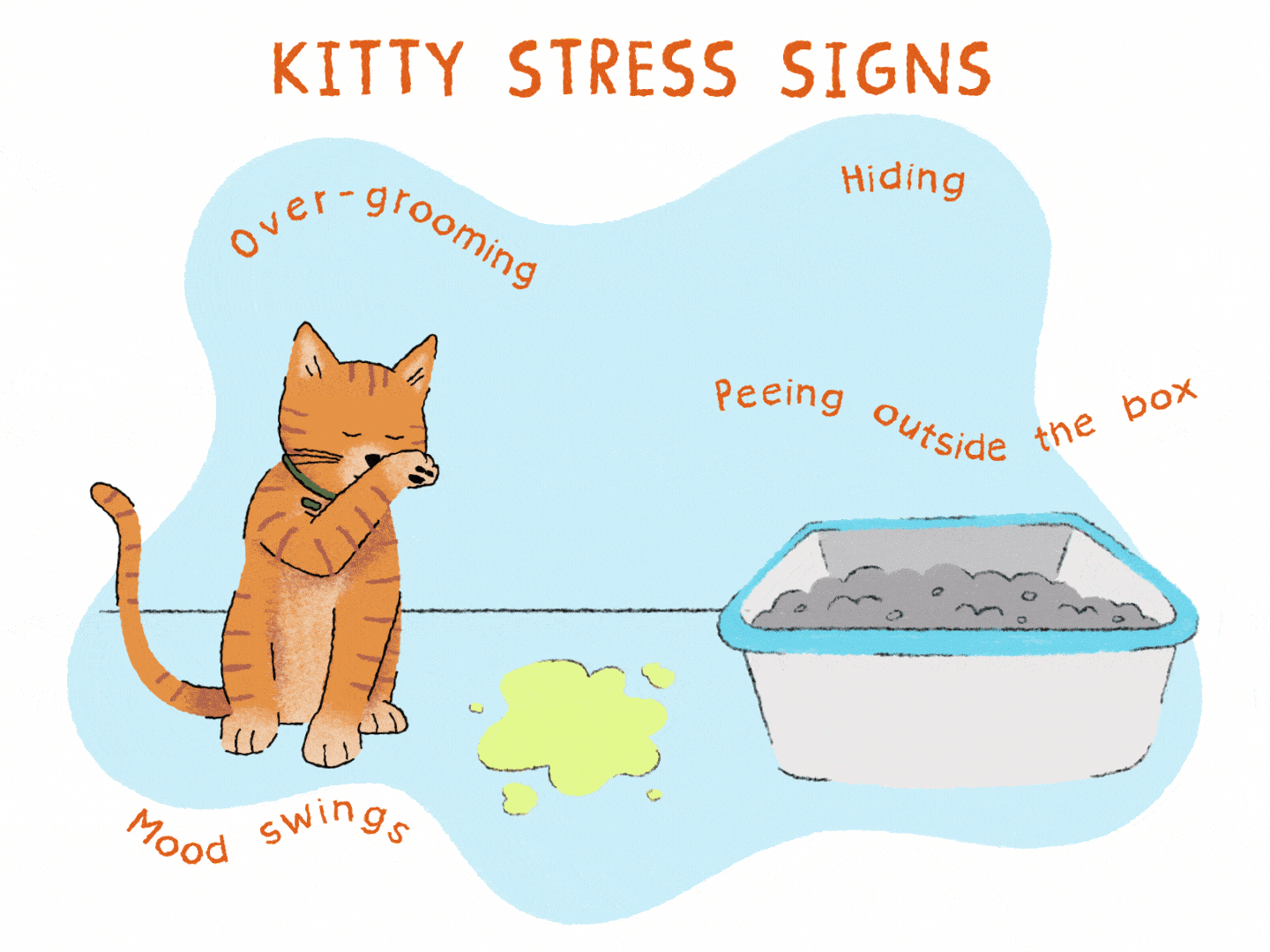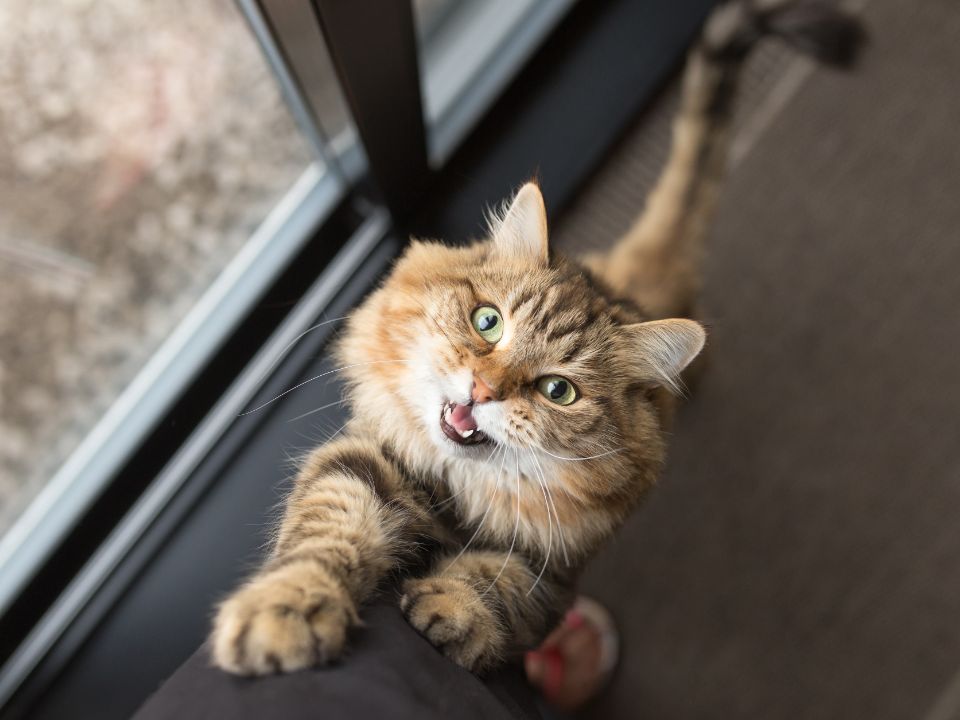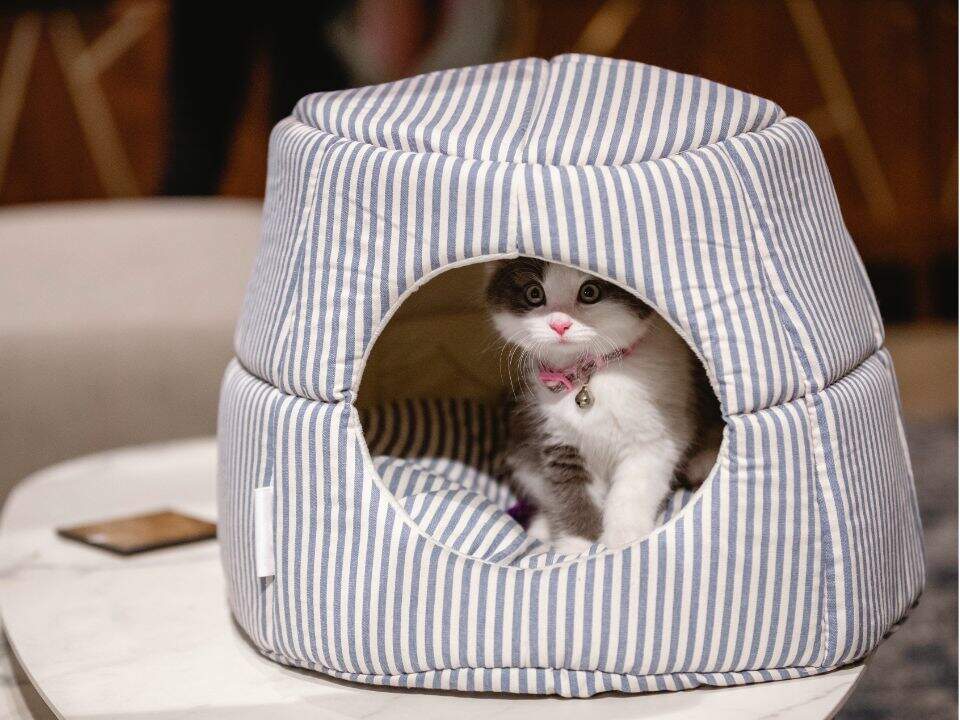how to help cat stress and anxiety
Are you concerned your cat is suffering from anxiety?
Bold, mellow, jumpy, shy — every cat has a unique personality that shapes how they respond to stress. You may first notice your cat has fears and phobias anywhere from 5 months to a year old, but cats can develop new triggers at any age. Here are the physical symptoms and stress-based behaviors to watch for, as well as ways you can help your cat.

If your cat seems stressed, your first step is to consult your veterinary team to rule out any physical cause. Make an appointment
What does an anxious cat look like?
When your cat is uncertain or insecure, they may “act out” with new behaviors, like stomach upset, peeing in new places, scratching stuff they know they shouldn’t, and obsessive grooming. Watch out for compulsive behaviors that actually hurt your cat, like licking themselves to the point of baldness. Try to think back to when this behavior started — did something weird or new happen that could have disturbed your cat?
Cat anxiety symptoms include:
- Pooping or peeing outside the litter box
- Suddenly being destructive
- New changes in appetite — either way less or way more
- Hiding, pacing, crouching defensively
- New aggressive or overly clingy behavior
- Meowing way more than usual
- Coat changes from not grooming or bald patches from over-grooming
- Vomiting or diarrhea
- New physical habits, like shaking their head, twitching their back skin, or rapidly licking their nose
What signs of anxiety need a vet?
Some signs of stress in cats indicate a life-threating emergency. If you spot any of the below, please take your cat or kitten to your local emergency veterinary hospital immediately:
- Your kitten hasn’t eaten or drunk water all day
- Your kitten or cat hasn’t peed normally for over 24 hours
- Your cat is straining and wailing, but can’t seem to poop or pee
- Your cat’s third eyelid is covering their eye
- Your cat is panting or breathing faster than usual
What causes cat stress?
The biggest source of stress for cats is often something new in their environment or routine. A move to a new house, a new baby or pet, weird new noises (like from neighborhood construction), or even unfamiliar guests in the house may trigger your cat. Some cats may be thrown by a change in your workday routine. Others may show stress if you suddenly move their food dishes, water, or litter to a new place — even inside the same house.
Here are some other possible sources of stress:
- Kitty litter that is dirty, in a scary place, or in a too-small box
- Unfamiliar cats, both inside or roaming outside
- Competing for food, water, litter, or rank with other cats
- Incomplete socialization when they’re kittens
- Aging, illness, or pain
Do cats get separation anxiety?
Cats definitely get anxiety, but it’s unclear if it’s the same as separation anxiety in dogs. Cats having a stress response show a lot of the typical signs of distress — wailing, digestive changes, lots of clawing, licking, and peeing — so diagnosing anxiety is mostly about figuring out the specific trigger. Then you can work with your veterinary team, or consult a specialist, to help figure out how you can best help your cat.


The best way to help your cat with stress is to try to be proactive. Change can be unsettling, so take it slowly. If you have to move food, water, or litter boxes to a new location, try to do it over time. If you’re moving your cat to a new house, start them in a small space, then gradually open up the rest of the house. Introducing a new pet? Separate the animals, then let them meet each other by sniffing under a door.
If there’s a transition in your cat’s life, try to provide familiar objects, like beds, toys, or even an old scratching post in your cat’s space. These can be a great source of comfort if there’s a new animal or person in the house, or if they’ve lost a loving human or animal friend.
Another way to help your cat is to provide a cozy cat place — maybe up high, like a cat tree, perch, or nook — that is entirely their own. Make sure to interact and play with your kitty. Leave fun toys, like catnip mice or food puzzles, to keep them entertained when you’re away. And always be sure their kitty litter is clean. (Imagine how stressed you’d be if your toilet was full of old poop and pee!)
If your cat seems fearful or stressed, try soft words, pettings, and treats. Never punish them for their anxious behavior or crate them to try to “calm them down.” Neither will help and may even make matters worse.
Human-based aromatherapy and essential oils have not been shown to help cats with stress, and some are actively toxic for your pet. Ask your veterinary team about cat pheromones specifically designed just for felines.

How Banfield can help
If you think your kittyBAE is stressed or anxious, please bring them in for a full exam. Your veterinary team can help rule out (or treat) any illness or injury, plus help figure out what’s causing their particular stress. The problem may be resolved with some small changes at home. Other options can include a pheromone solution that can help calm your kitty, special medications, or an anti-anxiety diet. Treating cat stress is a long-term commitment. We’re here to help you and your cat find a happy and healthy solution.
 Mites and mange
Mites and mange Podcast - Not Just Fluff
Podcast - Not Just Fluff
